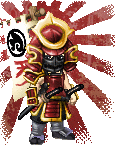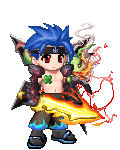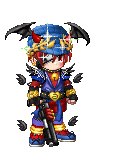- Marcopolo1234's Gallery
-

- View Profile
- View Fans
- Send Private Message
-
Artist Info:
 The moment when life ends can be a terrifying one, especially when one is unprepared for it. Soldiers on the battlefield scream, murder victims expire in terror. Who has not found themselves, in the last two weeks, trying to imagine the last moments of the doomed passengers on TWA Flight 800? The Aug. 5 New Yorker's lead story, on an earlier plane crash, features the last words from the cockpit, and they are not pleasant reading.<br />
The moment when life ends can be a terrifying one, especially when one is unprepared for it. Soldiers on the battlefield scream, murder victims expire in terror. Who has not found themselves, in the last two weeks, trying to imagine the last moments of the doomed passengers on TWA Flight 800? The Aug. 5 New Yorker's lead story, on an earlier plane crash, features the last words from the cockpit, and they are not pleasant reading.<br />
<br />
Yet it is possible for humans to die both fully conscious and in composure of soul -- as "Japanese Death Poems," edited by Yoel Hoffman, attests. The poems collected by Hoffman are part of a centuries-old Japanese tradition in which Zen monks, samurai and others compose poems at the moment of death.<br />
<br />
Herewith, some of those remarkable documents.<br />
<br />
<br />
<br />
Gesshu Soko, died January 10, 1696, at age 79<br />
<br />
Inhale, exhale<br />
<br />
Forward, back<br />
<br />
Living, dying:<br />
<br />
Arrows, let flown each to each<br />
<br />
Meet midway and slice<br />
<br />
The void in aimless flight --<br />
<br />
Thus I return to the source.<br />
<br />
Goku Kyonen, died October 8, 1272, at age 56<br />
<br />
The truth embodied in the Buddhas<br />
<br />
Of the future, present, past;<br />
<br />
The teaching we received from the<br />
<br />
Fathers of our faith<br />
<br />
Can be found at the tip of my stick.<br />
<br />
When Goku felt his death was near, he ordered all his monk-disciples to gather around him. He sat at the pulpit, raised his stick, gave the floor a single tap with it, and said the poem above. When he finished, he raised the stick again, tapped the floor once more, and cried, "See! See!" Then, sitting upright, he died.<br />
<br />
Hosshin, 13th century<br />
<br />
Coming, all is clear, no doubt about it. Going, all is clear, without a doubt.<br />
<br />
What, then, is all?<br />
<br />
Hosshin's last word was "Katsu!" (a word signifying the attainment of enlightenment.)<br />
<br />
Shoro, died April 1894, at age 80<br />
<br />
Pampas grass, now dry,<br />
<br />
once bent this way<br />
<br />
and that.<br />
<br />
Sunao, died in 1926 at 39<br />
<br />
Spitting blood<br />
<br />
clears up reality<br />
<br />
and dream alike.<br />
<br />
Senryu, died September 23, 1790, at 73<br />
<br />
Bitter winds of winter --<br />
<br />
but later, river willow,<br />
<br />
open up your buds.<br />
<br />
Kozan Ichikyo, died February 12, 1360, at 77<br />
<br />
Empty-handed I entered the world<br />
<br />
Barefoot I leave it.<br />
<br />
My coming, my going --<br />
<br />
Two simple happenings<br />
<br />
That got entangled.<br />
<br />
A few days before his death, Kozan called his pupils together, ordered them to bury him without ceremony, and forbade them to hold services in his memory. He wrote this poem on the morning of his death, laid down his brush and died sitting upright.<br />
<br />
Senryu, died June 2, 1827<br />
<br />
Like dew drops<br />
<br />
on a lotus leaf<br />
<br />
I vanish.<br />
<br />
Shinsui, died September 9, 1769, at 49<br />
<br />
O<br />
<br />
During his last moment, Shisui's followers requested that he write a death poem. He grasped his brush, painted a circle, cast the brush aside, and died.<br />
<br />
The circle is one of the most important symbols of Zen Buddhism. It indicates void -- the essence of all things -- and enlightenment. - Avg. rating:
- 1 Fans
-

- Warrior of Fl...
- Original Avatar
- 124 recent comments
-
-

- Burnin' up
- Original Avatar
- 35 recent comments
-
Comments (0 Comments)
No comments, click on the Add Comment button to add a comment.




